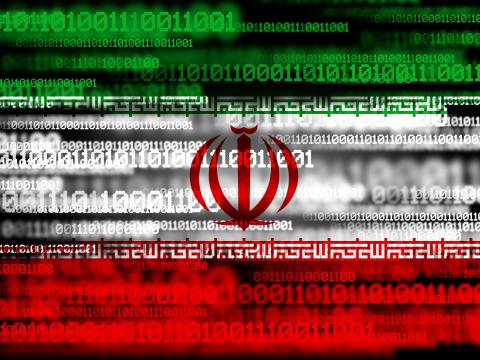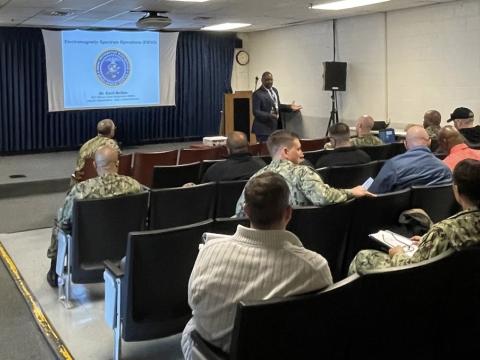Energy Effort Promises Many Solutions
 |
 |
 |
| MITEI researchers are developing new battery technologies that may one day greatly improve the performance of systems ranging from handheld electronic devices to electric vehicles. |
The Massachusetts Institute of Technology has never shied away from the toughest engineering and science challenges, and the school is maintaining this tradition by launching a far-reaching program to develop new energy technologies. Researchers are working to create innovative solutions and applications for fossil fuels; nuclear power; biomass and biofuels; and wind, water, ocean, solar and geothermal power.
The goal of the institute’s Energy Initiative is to foster increased research and education in energy and related fields such as climate change. The school approaches its research in a nontraditional manner by bringing together faculty from many disciplines, including computer science, mechanical engineering, economics and policy. “We’re trying to add to the traditional faculty-driven way of doing research in these areas by bringing together groups whose very different skills and perspectives can lead to new breakthroughs,” says Energy Initiative Director Ernest J. Moniz, Massachusetts Institute of Technology (MIT),
The initiative has been in operation for almost six months. Prior to its launch, the MIT Energy Research Council, which Moniz co-chaired, formed to develop the project’s organizational plan then disbanded after the initiative was launched. The MIT Energy Initiative (MITEI) is developing a broad research portfolio to address the diverse issues surrounding energy technology, use and policy. “There’s no silver bullet. There’s not going to be one solution. It’s going to have to be quite a diversity of technologies that come in over many different timescales,” he maintains.
The MITEI is built around research portfolios that focus on specific areas such as solar and nuclear power. Moniz hopes to establish one portfolio per year. The difficulty lies in selecting the faculty, preparing research agendas and raising resources to support the work. The plan is to have roughly a half-dozen major research thrusts involving multiple faculty members. “If we could get a handful of these [programs] running over the next five years, that would be success. The research would flow out from them for another five to 10 years, and that’s where we would see if we’re having an impact,” he explains.
Although some technologies could be introduced in a short time, others such as supply systems will require years or decades from introduction to widespread use. Moniz notes that solutions to energy problems are realized when technologies are deployed, not when they are in development.
A benefit of the program is brainpower because the initiative will create a large number of graduate students who will go on to help advance future energy research. MIT also is implementing new courses in the energy curriculum. However, research will take time to mature and to impact the marketplace. “We’re in this for the long haul. We believe that this is going to be an issue that’s not going to go away if oil prices change next year. This is a sustained challenge that requires a sustained response,” he says.
The MITEI’s first major portfolio is biofuels and energy bioscience. Moniz describes this effort as the application of modern biology and technology to solve energy problems. MIT has established a large research group that is collaborating with
The initiative also is using a multidisciplinary research approach by collaborating with biologists, chemical engineers, economists, mechanical engineers and chemists. In addition, the MITEI is in the early stages of a research plan to develop solar energy technologies and to address associated energy storage issues. Moniz notes that the next challenge is to secure the resources for the biofuels portfolio.
Moniz is sanguine about energy bioscience. He states that the program’s goal is to apply new technologies such as metabolic engineering, which is currently used mainly in medical and pharmaceutical areas, to energy research. “You have these powerful new tools that weren’t around 20 years ago. These tools are now available, and the expectation is that applying them can lead to new breakthroughs,” he shares.
MIT also is looking for partnerships with the federal government. Moniz observes that the U.S. Energy Department is very interested in biofuels and is making funds available for additional research into the technology. However, he adds that in many research areas, the primary partnerships will be with private industry.
Noting that there are many ways to store power, Ceder says that one of his group’s goals is to study ways of putting energy into relatively small and transportable packages. Another focus is extremely large-scale energy storage. He explains that this type of storage is not mechanical but relies on new chemical methods that have not been attempted before. “We will work on batteries, of course, because it’s a more near-term application. But there is a lot of other work going on that is mostly centered on electrochemistry because it is the only way of efficiently converting fuels or any chemical substances into electricity,” he says.
In addition, larger applications such as electric vehicles and power system backup for power substations are other development focuses. Ceder observes that designers have attempted to adapt battery solutions from portable electronics to these large-scale problems only to discover that the solutions are inadequate. “Almost all of the modern battery research has focused on portable electronics because that was where the business was. You’ve taken something that’s designed for a 1-watt-hour storage, and you’re trying to do something that’s a million times bigger,” he maintains.
Large-scale energy storage also has different design criteria that can open the way for new solutions. For example, the power backup for a 10-megawatt substation can use technology that cannot work in consumer electronics.
One area in which large-scale systems differ from consumer products is toxicity. Ceder notes that designers cannot put any toxic substances into a cell phone. But this requirement is much less of a concern when building a substation because it is a controlled environment. “I’m not saying we have to make super-toxic things, but there’s just a larger chemical space in which you can work. A lot of things that were discarded 15 years ago, or that people just don’t think about anymore, are suddenly fair play,” he says.
For the past decade, Ceder has led an interdisciplinary group focused on power storage research. This group’s efforts are now part of the MITEI. His own research concentrates on cathodes, which he describes as a critical component for energy density. The group also models and designs virtual materials for batteries. He notes that it has been successful in its virtual modeling efforts and is now using this technique to develop electrodes with substantially higher power and energy densities.
Energy is the amount of power used to charge a battery, Ceder explains. Power relates to how quickly energy can be stored and released from a battery. For example, a battery for a cell phone or laptop computer usually is high energy, but it is not necessarily high power. “Your laptop battery drains over the course of a couple of hours and recharges in around two hours. That’s not what we consider a high power rate,” he says.
Ceder’s research teams are designing materials for both high energy and high power. Virtual materials testing allows scientists to examine thousands of new compounds to find the best combinations for specific energy densities. High-charge-rate batteries will enable manufacturers to create a new user experience, but high discharge rates also permit batteries to produce large bursts of power. In the past, capacitors were necessary for such discharges.
Ceder says that one military application is field charging. He notes that the best way to charge a battery under battlefield conditions is to hook it up to a vehicle. The military already is using vehicles in this role, but there is a difference between charging a battery in two hours and charging it in only one minute. “It’s the same for commercial use. If you could recharge your battery in one minute, you would live with a lot less battery life. If you’re in an airport, now you can stand by and wait for a minute while it completely charges. That’s a lot different from sitting on the ground tethered to a power plug to do your work,” he explains.
The MIT research teams under Ceder recently have developed two new battery materials: lithium nickel manganese oxide and lithium iron phosphate. Ceder shares that the automotive industry is interested in lithium iron phosphate because the battery’s base materials are very inexpensive and extremely stable and safe. “When you charge most batteries, they are essentially highly oxidized. The battery just wants to release oxygen, sort of like a bomb. Anything in the battery that’s oxidizable is essentially burned,” he says.
A key aspect of developing lithium iron phosphate for batteries is the affordable use of nanotechnology. Ceder explains that nanotechnology allows the material to have very high power and charge-discharge rates. The charge and discharge occurs by the diffusion of lithium into the active battery material. If the substance is on the nanometer scale, the diffusion does not have to travel very far into the material, enabling very fast reactions.
Conventional batteries currently operate at two-thirds of their theoretical limits. “We can essentially double that theoretical limit. We can see a potential improvement by a factor of three in energy on the basis of weight and volume,” Ceder says. He adds that such a breakthrough would have major implications because batteries are expensive.
Increasing battery energy density by a factor of three would allow engineers to choose between getting the same duration from a battery that is three times smaller or making the same size battery run three times longer. He explains that designers make different choices depending on the industry. Cell phone manufacturers emphasize size reduction because batteries take up a greater part of the devices’ space. Weight also is an important consideration for laptop computer batteries and vehicle applications.
Web Resource
MIT Energy Research Council: http://web.mit.edu/erc/about/index.html




Comments